Puffballs are a rather unique type of fungus. They don’t have the typical cap and stem you’d expect from a mushroom, and they look quite different from anything else.
What are puffball mushrooms? Puffballs are a group of mushrooms that includes several different species. All true puffballs are edible, although there are some false puffballs and lookalikes to watch out for. They grow as solid spheres of fungus without any gills, caps, or stems.
In this article, I’ll teach you what puffball mushrooms are, how to identify and forage for them, plus how to store and cook them. I’ll also teach you how you can try to grow puffballs yourself, which is difficult but worth a try.
What Are Puffball Mushrooms?
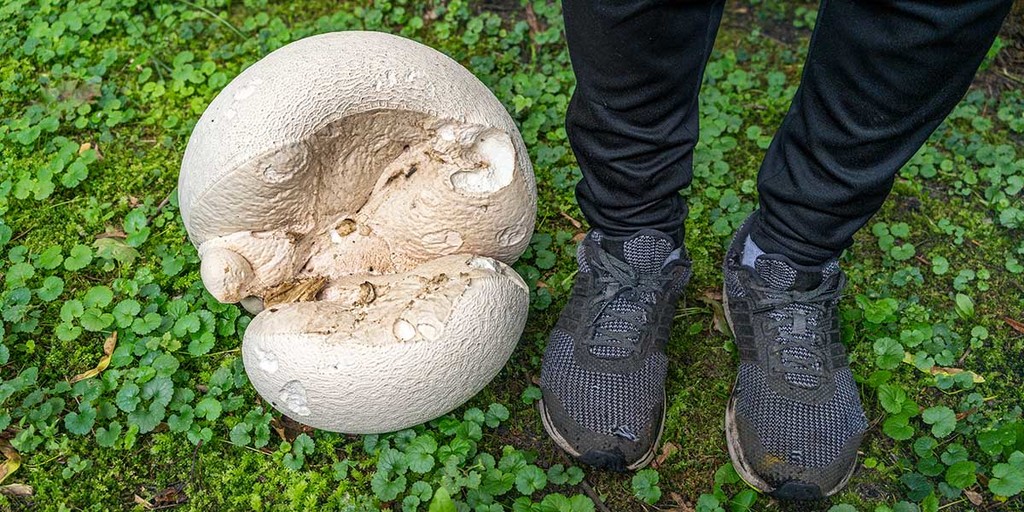
Puffballs aren’t mushrooms that you usually see at the grocery store, or even at farmers markets. So most people are unfamiliar with them.
But if you spent much time exploring or playing in the woods as a kid, chances are you’ve come across them without even knowing it.
If you ever found a strange alien-like ball or egg-shaped sac in the forest that seemed to release a massive cloud of smoke or dust when you stepped on it or kicked it, that was a puffball!
What you experienced was a fully mature puffball releasing its spores.
That’s where puffballs get their names from. They mature and release clouds of spores when the mushroom bursts or something makes contact with it.
Puffballs look unlike most other types of mushrooms since they don’t have gills. Young ones are solid balls of spongy tissue.
This makes them relatively easy to spot in nature, since they can be quite large, round, and white. All true puffballs are edible if picked young enough.
Puffballs aren’t a single species, but instead they’re a broader group of mushrooms comprised of several different genera including Bovista, Calvatia, Handkea, Lycoperdon, and Scleroderma.
In addition to eating them, puffballs were also traditionally used in Tibet to make ink.
Fun fact: The largest giant puffball ever found was discovered by a schoolboy in Yorkshire in 2010. It measured 170 centimeters or 66.5 inches in diameter!
How To Identify Puffball Mushrooms
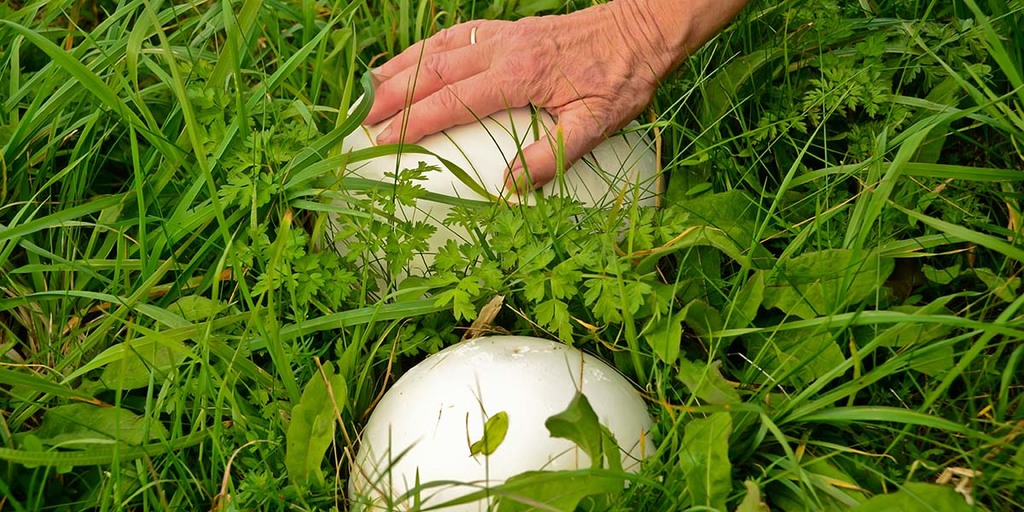
Correctly identifying puffball mushrooms before eating them is very important. There are several species of poisonous Amanita mushrooms that can look similar to puffballs during their early growth stages.
Once you get a puffball mushroom home, the first thing you should do is cut it in half. The inside flesh should be thick, hard, and solid white.
Discard any suspected puffballs that have the shape of a mushroom or evidence of gills inside of them, or any brown, black, yellow, or purple coloration inside of them.

True puffballs will be solid white inside. Anything else is a different type of mushroom that may cause an upset stomach or even severe poisoning.
Only young puffballs are edible. If you find one that is soft, brownish, or full of spores inside then it’s too mature for you to eat.
Puffballs are spherical and don’t have a cap or any gills. Instead, the spores form in what’s called a gleba in the middle of the fruitbody.
When puffballs start to mature, the gleba in the center may start to turn yellow or green.
This isn’t necessarily a sign that the puffball you’ve found is toxic, but you may simply have found it a week or two too late.
They’re no longer edible when they reach that point. But come back a week later to the same area, and you may find that new puffballs have cropped up.
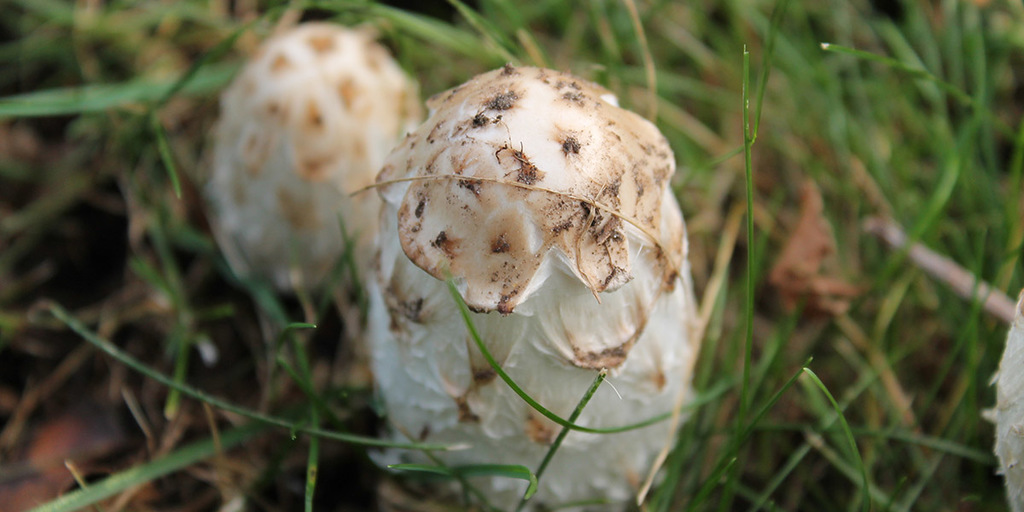
There are a few puffballs that have a stalk, but none of these are edible as they are all tough and woody in texture. One example is the false shaggy mane mushroom.
Giant puffballs can reach a foot or more in diameter, which makes them hard to mistake for any other type of fungi once they reach that size.
If you find puffballs that are too ripe to eat, do them a favor and kick them or step on them.
You’ll help release their spores, which means you’ll have a better chance of finding more puffballs in that same area again at a later time. I promise that it doesn’t hurt them, plus it’s fun!
So to summarize, if it’s pure white inside and doesn’t have any sign of gills, it’s a puffball. Anything else and it’s either a toxic species or too mature to eat.
How To Forage For Puffball Mushrooms
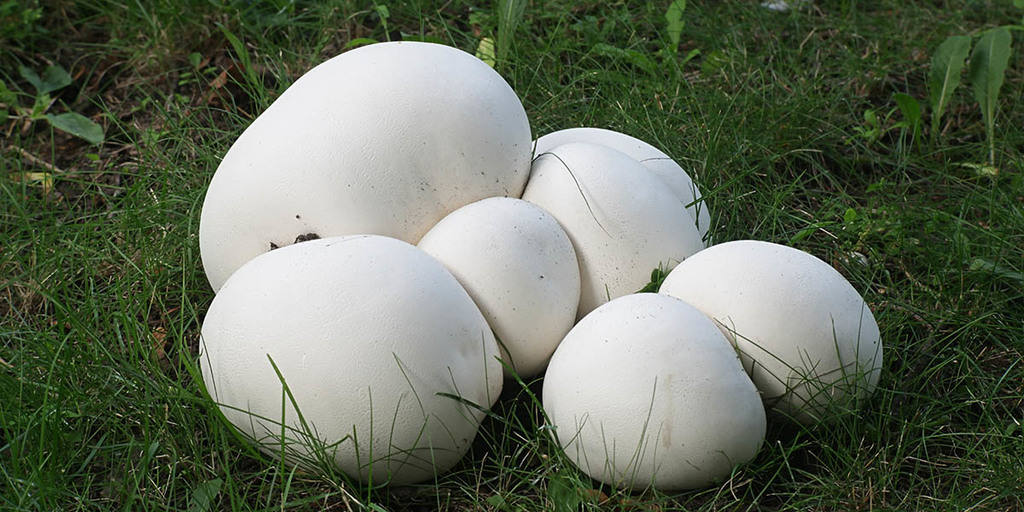
You might be lucky enough to have a farmer’s market where puffballs are sold when they’re in season. But for everyone else, you’ll have to go out into the wild and find some of your own.
Like I’ve already alluded to, the two big things that you’ll want to watch for are correctly identifying the puffballs, and making sure they’re at the right age when they’re still edible.
1. Locating Puffballs
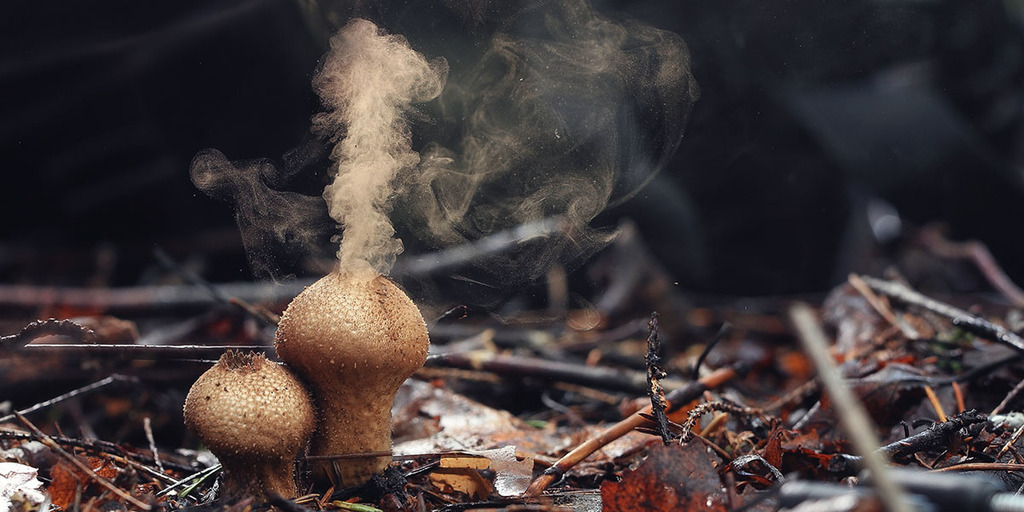
Puffballs aren’t like many other types of mushrooms that have an extensive mycelial network under the ground. Most mushrooms will come up in the exact same spot every year, since the fungus underground doesn’t move.
Puffballs are a bit different, since they grow wherever their spores end up landing. So they can move around from year to year.
They might not necessarily come up in the same field from one year to the next, depending on how the wind carries their spores. They don’t get attached to one particular trees like chanterelles or maitake does.
However, once you find puffballs in one area, you’ll know roughly where some are likely to be the next year. Whether that’s in a field, or deep in the woods.
2. Puffball Habitats
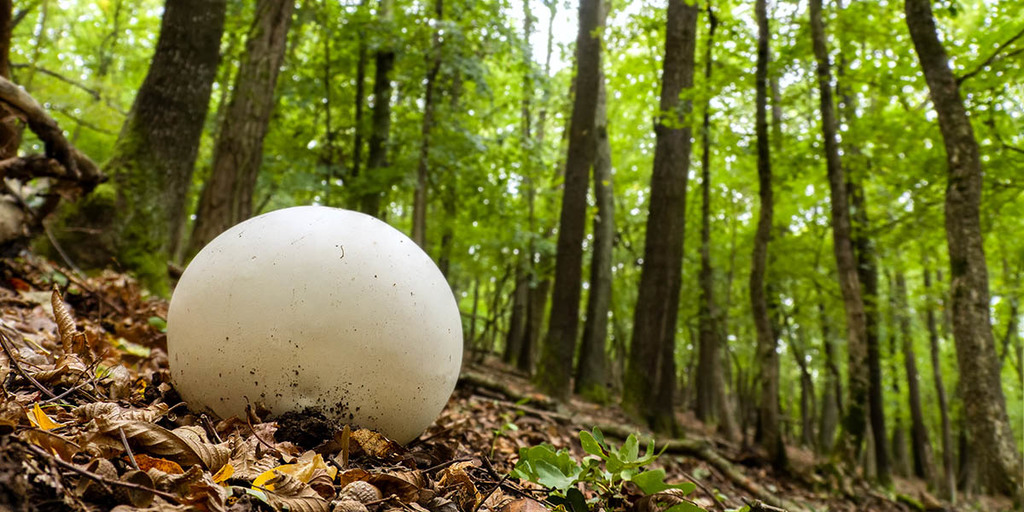
Giant puffballs (Calvatia gigantea) are the largest and most common type of puffball in most regions. They are found all over Europe and North America.
They’re usually found in grassy open meadows and fields. They tend to like well-fertilized areas like lawns and golf courses. But you can also sometimes find them in the undergrowth of deciduous forests.
Puffballs never grow on logs or trees, only on the ground. So if it’s growing on wood, it’s not a puffball.
Good times to go looking for puffballs is in the late summer or early fall. Depending on where you live, they should be out from August until October.
3. Harvesting Puffballs

If you come across several puffballs in the wild, it’s good to slice one of them open on site to make sure it’s actually a puffball.
There’s no point harvesting a dozen of them and bringing them all home, only to realize they’re inedible. But if you find one good puffball, chances are the rest of them will be as well.
Before you even cut into a puffball, the outside should be perfectly white. Once they are too old, they tend to start turning yellowish or greenish on the exterior as well.
When you harvest puffballs, check the bottom of them where they attach to the ground to make sure there are no larvae or worms.
Insects love mushrooms, and puffballs are no exceptions. So if you see any bugs on the bottom of your puffballs, cut them out right away.
That will prevent them from infesting the rest of your harvest, and they’ll last longer.
Worms will leave signs of tunneling inside the mushroom flesh, so cut away any signs of parasites that you see. The untouched sections will still be fine and bug-free.
Can You Grow Puffball Mushrooms?
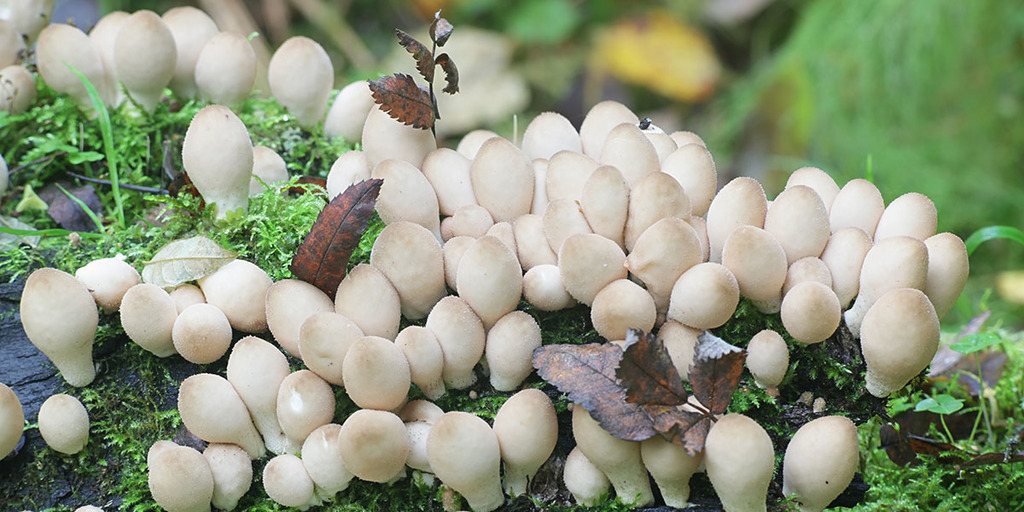
Puffballs hold the record for producing more potential life than any other living thing on earth. A single average-sized puffball can produce as many as seven trillion spores.
But the spores also have an extremely low germination rate, and only about one in a trillion will actually grow into a new puffball in nature.
Puffballs are very hard to grow commercially since they grow differently than other types of mushrooms. You’ll have about the same level of success as trying to grow chanterelles, morels, or truffles.
Although you don’t need to worry about finding the right species of tree to plant them under at least.
So trying to grow puffballs is quite hard, but not impossible. But if you really want to see if you can make it work, it doesn’t hurt to try.
Here is how you can try to grow your own puffball mushrooms:
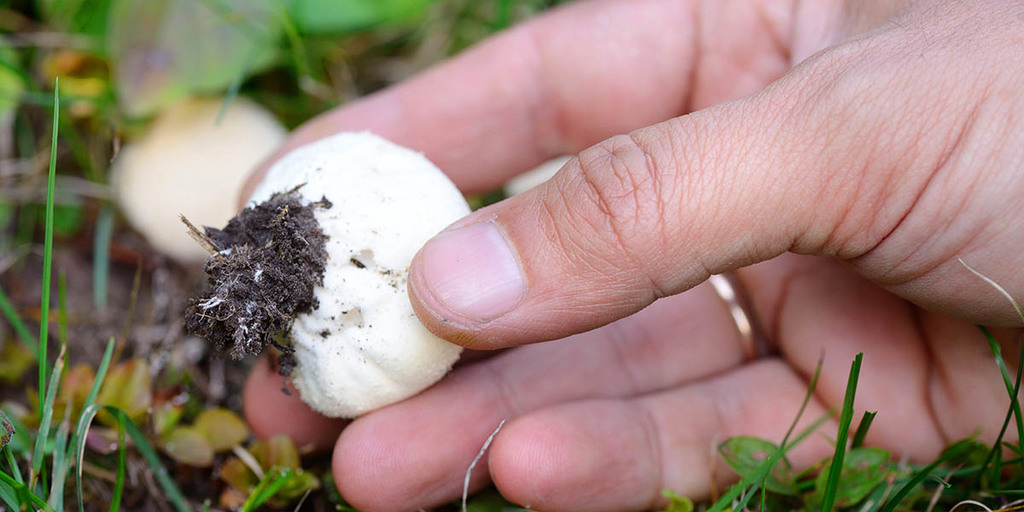
You’ll want to pick a fully ripe puffball mushroom after it has turned completely brown. That way you know it’s completely filled up with mature spores.
Carefully cut the puffball at the base, and put a piece of cardboard or paper towel on the base to keep any spores from falling out.
When you get the puffball home, start by filling a one gallon jar with water. To maximize your chance of success, try to use non-chlorinated water.
You can either let some water sit out for about 24 hours for the chlorine to evaporate off, or you can buy distilled water.
Add a pinch of salt to the water to help keep any bacteria at bay, and a teaspoon of molasses to give a source of food to the spores, and stir thoroughly.
Next, hold your puffball over the jar and carefully squeeze it so the spores go into the jar.
I like to poke the puffball with a knife to create an opening they can easily escape from, otherwise, you risk the puffball bursting in a random spot and going all over you.
It goes without saying that you will want to do this step outdoors. Otherwise, it only takes one wrong move to end up covering your kitchen in billions of spores.
Once you’ve got as many spores as you can into the jar of water, put a lid on the jar, gently shake it, and set it somewhere for two days where it won’t be disturbed.
The final step is to take the jar of spores and water that you mixed and pour them out onto your lawn, or some other place where you want puffballs to grow.
You can attempt it anywhere, but it’s best to place the spores somewhere similar to the environment where you found the original puffball if possible.
If you have multiple puffballs, you can experiment with pouring your spore slurry on multiple different fields and lawns and see where you have the most success.
What Do Puffball Mushrooms Taste Like? How Should You Cook Them?
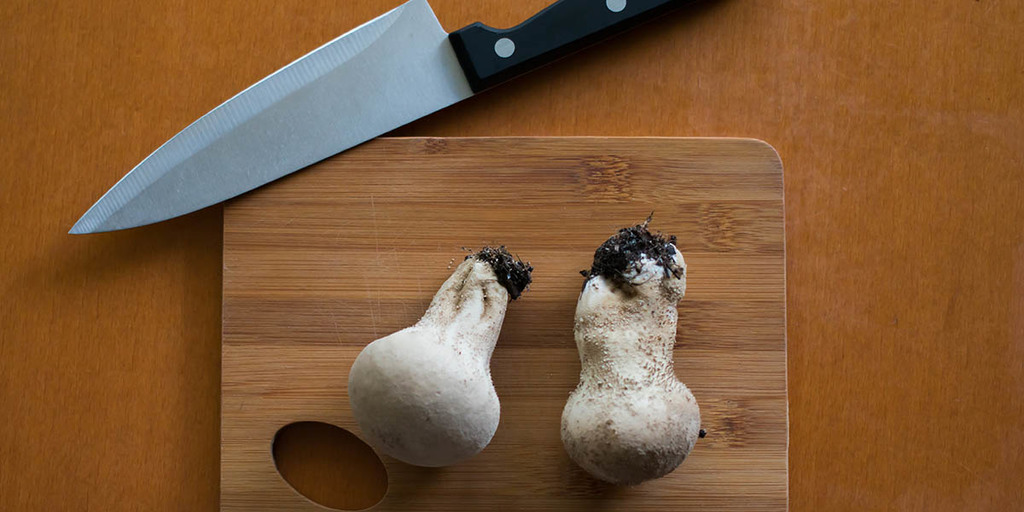
Some people say that have rich, nutty, earthy flavors. The kind of tastes you’d expect from a mushroom.
Other people say puffballs don’t really have any flavor of their own, and they just absorb the taste of whatever other ingredients you cook them with.
I think both are potentially true, and it really depends on which species of puffball you’re harvesting.
Cleaning Puffball Mushrooms
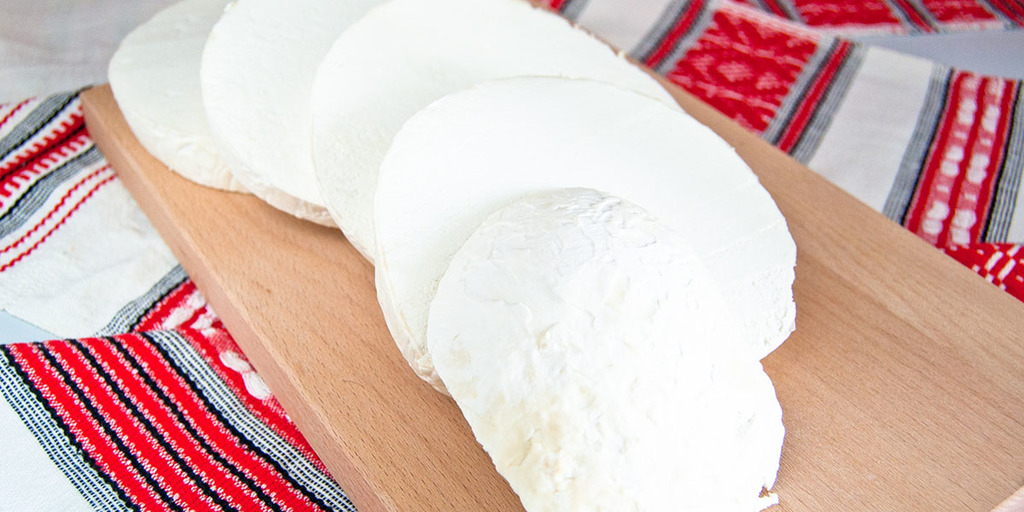
With lots of other mushrooms, you have to do a lot of work cleaning off dirt, debris, and bugs.
Puffballs are pretty easy to clean in comparison, since they have a thick tough skin that keeps all of those less-desirable things out of the inner part of the mushroom.
You can eat the puffball skin if you want to, but it is a little tougher than the rest of the mushroom. If you do eat it, just be sure to brush it thoroughly to remove as much dirt as you can.
If you don’t want to eat the skin, it peels off pretty easily. You can either use your fingers or a sharp knife to remove it.
However, I’d leave the skin on until you’re ready to cook the puffball, as it will help keep the inside part of the mushroom moist and prevent it from drying out prematurely.
Personally I think it’s best to just discard the puffball skin. It’s the easiest and saves you the work of having to clean it.
Cooking Puffball Mushrooms
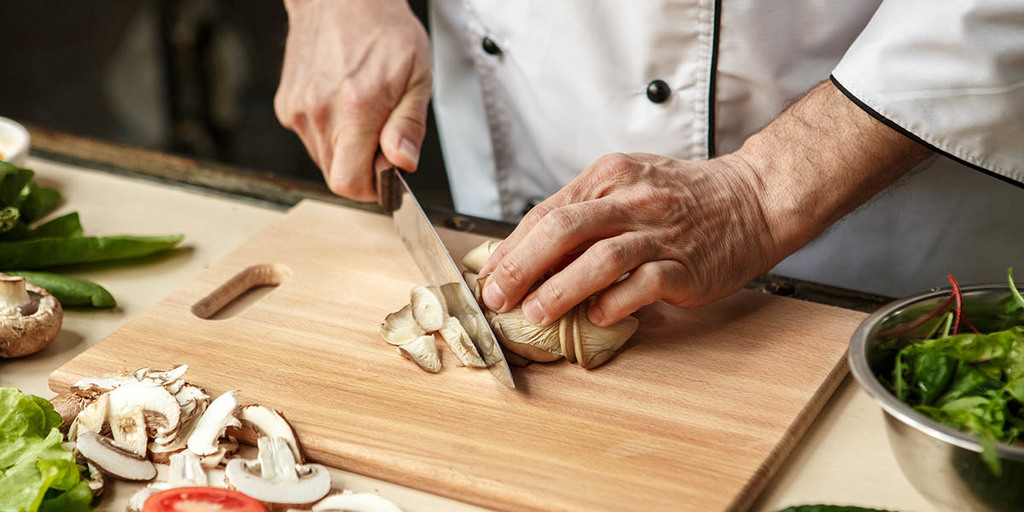
If you don’t cook puffballs properly, they can get soggy. Unless you are planning to put them in a soup, they really taste best when they’re browned. Cut them into slices using the biggest, sharpest knife you’ve got.
Then put them in a skillet with some oil and cook them until they’re a golden color to seal in the flavor, just like chefs suggest searing chicken or steak before putting it in the oven.
You can also cook puffball mushrooms on the grill. If you do, it’s best to coat them in oil thoroughly (I prefer olive oil) so they won’t stick.
Battering and frying is another popular way to cook up puffballs. Although this is the least healthy approach, so it’s not the best if you’re looking for something a bit lighter.
One last way to cook with puffballs is to use them as a substitute for tofu. Since they absorb the taste of other stuff you cook them with, this is a good option.
You can cut them into tiny cubes and grill them, use them in miso soup, toss them in teriyaki sauce, or anything you’d normally do with tofu. They also make a great substitute for any recipe that calls for eggplant.
It’s hard to go wrong with puffball recipes, so feel free to experiment. The one thing I wouldn’t recommend is boiling them. From my experience, they come out mushy and not very appealing.
- Read more of How to cook mushroom the right way here.
Preserving Puffball Mushrooms
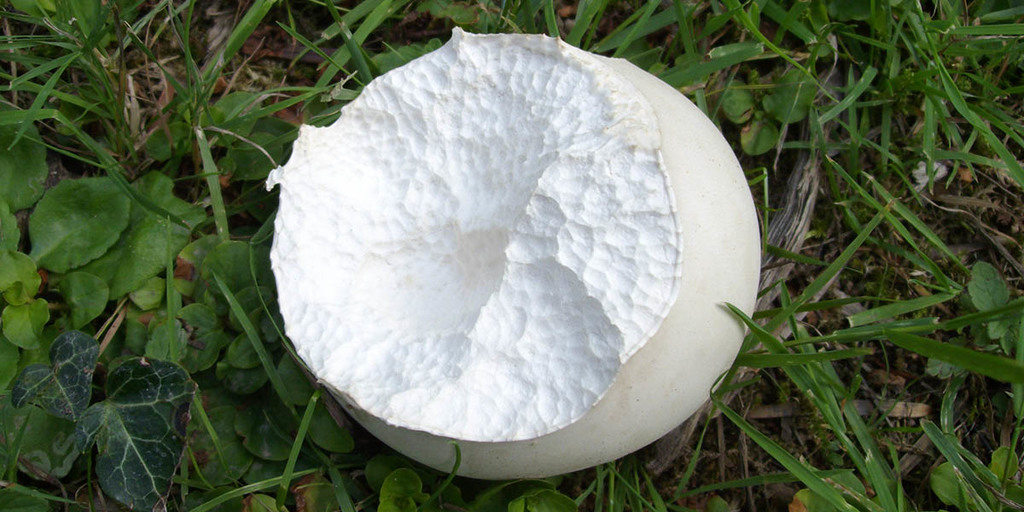
Since big puffballs can weigh 20 pounds or more, you might have trouble using them up completely before they go bad.
You can put thin slices in a food dehydrator to make dried puffballs, like you can do with other types of mushrooms. Then you can re-hydrate them and add them to recipes as needed.
I’ve also heard of people crushing dried puffballs into powder and using it as a substitute for flour to make flatbreads. Although I haven’t tried it myself.
Medical Benefits of Puffballs
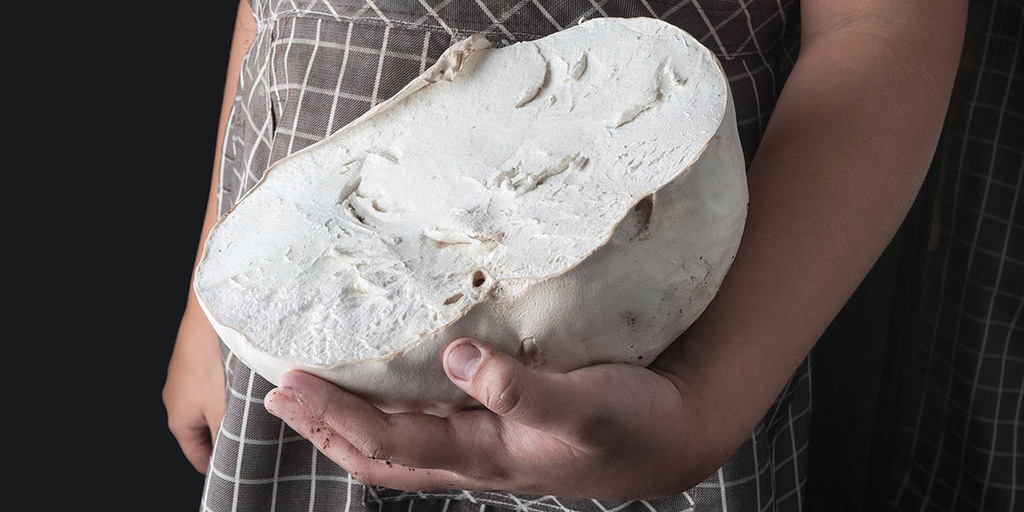
Besides tasting great, puffballs also have medicinal benefits. They contain a substance that’s capable of inhibiting the growth of lung cancer cells and other tumors.
Puffball spores were also used in Native American folk medicine as a coagulant to slow bleeding and help blood to clot.
In Chinese medicine, puffball mushrooms are called Ma Bo and they’re similarly used to treat bleeding and hemorrhages.
Modern medicine confirms that compounds in some species of puffball mushrooms have a hemostatic effect and are particularly effective at slowing and stopping nasal and oral bleeding.
It is also able to inhibit the growth of Staphylococcus aureus and other gram-positive bacteria.
- Learn more about Health and Nutritional Benefits Of Mushrooms here.
How To Store Puffball Mushrooms
Like all other types of mushrooms, puffballs don’t last long before they will start to go bad and smell. After all, they’re basically big balls of protein, so they quickly spoil just like a piece of meat.
To extend the life of your puffballs, you need to chill them as soon as possible. If you get them in the fridge right away, they should have a great shelf life.
Puffballs will stay fresh the longest if they’re kept whole. But chances are that you won’t be able to fit large ones in your fridge in one piece, so you’ll probably need to slice them into segments.
Conclusion
Puffball mushrooms have a mild flavor that lends itself well to a wide variety of dishes.
They’re rarely found in shops, so you’ll most likely need to go foraging if you want to try them for yourself. Luckily these large white balls tend to stand out and are pretty easy to find.
They’re also some of the easier mushrooms to positively identify. When you cut them open, just be sure that they’re solid white with no other colors, and no signs of developing gills or other strange shapes.
If you want to learn more about growing mushrooms, then read these guides:
